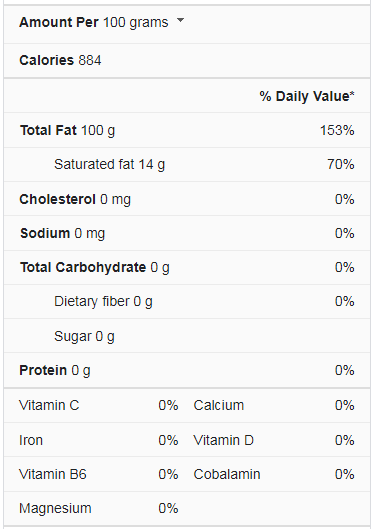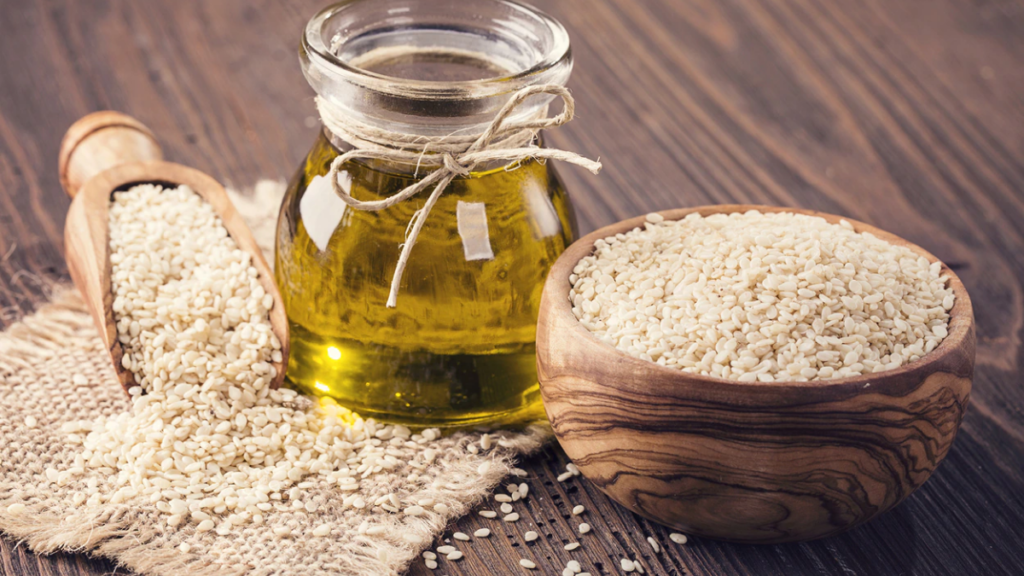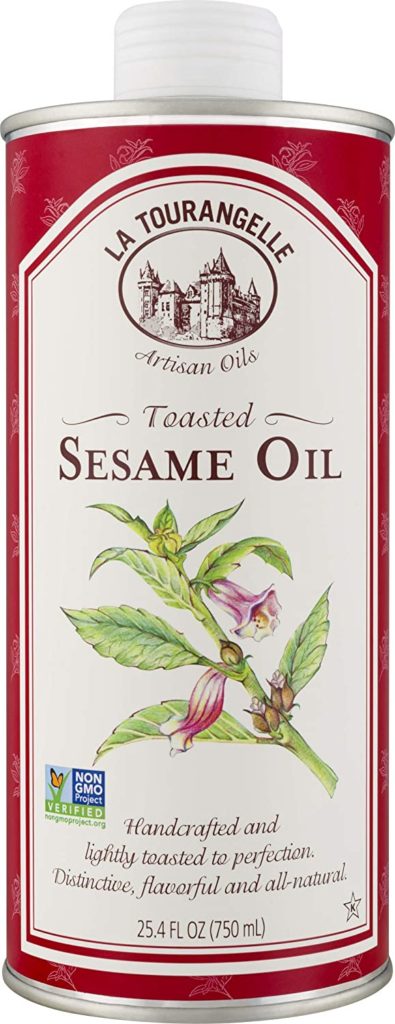Sesame oil is the world’s best-tasting oil, and it gives food a delicious flavor. Cooks use sesame oil more as a condiment—a flavoring aid—than cooking oil, unlike most oils. The nutritional qualities of the sesame plant have led to its oil being dubbed the “Queen of Oilseeds” by some. Vitamin E, vitamin K, organic compounds, and other beneficial components are abundant in sesame oil.
Sesame was first cultivated over 5000 years ago, and it thrived where other crops failed. One of the first crops to be processed for oil was sesame seeds.
Sesame oil is most commonly found in Asia and the Middle East, and it is used extensively in Chinese, Korean, and Japanese cuisine. Sesame oil is available in various forms, including raw, cold-pressed sesame oil, toasted sesame oil, and Indian sesame oil. It’s great for sauteing, and toasted or dark sesame oil has stronger umami and nutty flavor (it’s one of those cooking oils where a little goes a long way). Regular sesame oil (also known as light sesame oil) has a milder flavor.
Sesame Oil Nutrition Facts
What is Sesame Oil?
Sesame oil is a condiment made from sesame seeds (Sesamum indicium). Unlike most vegetable/seed oils, Sesame oil has a naturally nutty and flavorful flavor and does not need to be refined to be edible.
A large amount of sesame oil is pressed at a low temperature before being bottled and sold. On the other hand, some manufacturers make their oil through a solvent extraction process, and such refining processes are generally justified because it saves time, effort, and money.
The flavor of unrefined, freshly pressed sesame oil is light and nutty, and the color ranges from yellow to amber or dark brown. On the other hand, refined sesame oil has no discernible flavor and a light color similar to other vegetable oils. Sesame oil is most commonly found in Asia and the Middle East, and it is used extensively in Chinese, Korean, and Japanese cuisine.
What does Sesame Oil Taste Like?
The flavor of sesame oil is earthy and nutty. In the grocery store, you may see raw (often cold-pressed) sesame oils or toasted sesame oils, which are slightly different. Sesame oil that has been cold-pressed is much milder and almost sweeter. Toasted sesame oil is the more flavorful of the two, and it has a darker color and a roasty, smoky flavor, similar to roasted nuts.
Sesame oils are thick in general, but some are thicker than others. Sesame oils that have been toasted can have a more dense texture. Cooking sesame oils have a lighter flavor and consistency than regular sesame oils. In general, you would use more of this type of oil in your meals than toasted sesame oil.
What are the Health Benefits of Sesame Oil?
Here are the health benefits of sesame oil:
High in Antioxidants
Sesamol and sesamol, two antioxidants found in sesame oil, may have powerful health benefits. Antioxidants are substances that aid in reducing free radical damage to cells. Inflammation and disease can be caused by an accumulation of free radicals in your cells. Antioxidants are substances that aid in reducing free radical damage to cells. Inflammation and disease can be caused by an accumulation of free radicals in your cells.
Has Strong Anti-Inflammatory Properties
Chronic inflammation can be harmful and lead to illness, so it’s critical to keep it bare minimum. Sesame oil has long been used in traditional Taiwanese medicine to treat joint inflammation, toothaches, and scrapes due to its anti-inflammatory properties. Sesame oil has recently been shown in animal and test-tube studies to reduce inflammation, one of its main health benefits.
Good for your Heart
According to a large body of research, a diet rich in unsaturated fats is good for heart health. Unsaturated fatty acids make up 82 percent of sesame oil, especially high in omega-6 fatty acids. Omega-6 fatty acids are polyunsaturated fat necessary for a healthy diet and help prevent heart disease. In rats, sesame oil has been shown to help prevent heart disease and even slow plaque formation in the arteries.
May Help Control Blood Sugar
Sesame oil may help people with diabetes maintain a healthy blood sugar level, especially important. In one study, rats with diabetes were fed a 6 percent sesame oil diet for 42 days, resulting in significant blood sugar reductions compared to rats who were not fed the oil. Sesame oil may even help with long-term blood sugar control.
In a study of 46 adults with type 2 diabetes, taking sesame oil for 90 days reduced fasting blood sugar and hemoglobin A1c (HbA1c) levels significantly more than a placebo group. HbA1c levels are a measure of blood sugar control over time.
May Help Treat Arthritis
Osteoarthritis is a common cause of joint pain that affects nearly 15% of the population. Sesame oil has been linked to arthritis relief in several rodent studies. Researchers gave the oil to rats at daily doses of 0.5 ml per pound (1 ml per kg) of body weight in a 28-day study. The rats had lower levels of oxidative stress markers and arthritic symptoms like joint pain. Although animal studies have shown that sesame oil can help with arthritis, more human research is needed.
Sesame Oil Disadvantages
Although sesame oil has a lot of health benefits, it has some disadvantages also:
- One of sesame oil’s most serious side effects can cause allergies, such as anaphylaxis. You may experience difficulty breathing, dizziness, cardiac arrest, and other symptoms. As a result, anyone sensitive to sesame oil should consume it in moderation.
- Sesame is beneficial for maintaining normal blood glucose levels, and this is due to the fiber and protein in your diet, which lowers your body’s insulin resistance. However, if not taken in moderation, it can cause your blood glucose level to drop below normal, which is not a good situation.
- Sesame oil’s high fiber content can cause pain from mild to severe appendicitis because it contains insoluble fibers, making it difficult for the stomach to digest. It can also cause bloating and painful appendicitis.
- Weight gain is a common sesame oil disadvantage because the dietary fiber in sesame oil makes it more difficult to digest. After all, these fibers are indigestible, slowing down the body’s normal digestion process. On the other hand, it causes prolonged digestion, which causes weight gain over time.
How to Use Sesame Oil?
Here are some different ways to use sesame oil now that we’ve established that it’s better to use it as a condiment.
Add it at the End of Stir-Frying.
We can use sesame oil in stir-fries even though it isn’t well-suited to high-heat cooking. Traditionally, the oil is added near the end of the cooking process (which also better preserves the flavor).In other words, for the stir-frying, use coconut oil or olive oil, and add sesame oil at the end for flavor.
Use it in a Marinade or Dressing.
For a tasty marinade or dressing, try combining the following ingredients in a bowl:
- 1 tbsp sesame oil
- 1 tbsp red wine vinegar
- 2 tbsp soy sauce
- Two cloves of smashed garlic
- 1 tsp grated ginger
This recipe makes an excellent marinade for steak or other types of red meat.
Soups and Stews
A little sesame oil goes a long way in a soup or stew to impart its nutty and flavorful flavor.
For Seasoning
Sesame oil can also be used as salt, pepper, or sauce. This flavorful oil enhances almost any dish, and a few drops would likely improve any meal.
La Tourangelle, Toasted Sesame Oil
Features:
- A Traditional Touch: Sesame oil has long given its characteristic flavor to traditional Asian food. Discover the complex flavor of our Toasted Sesame Oil for a distinct flavor in stir-fry, fried rice, noodles, or marinades
- Quality You Can Taste: The mainstay of all La Tourangelle’s natural, artisanal oils is excellent taste derived from the best quality ingredients. Add the flavor of La Tourangelle to any meal.
- Delicious and Versatile: Our oils, dressings, and vinaigrettes make it easy to create distinctive dishes for professional chefs, novice cooks, and foodies. Great for salads, meats, pasta, and more
- Natural and Sustainable: La Tourangelle’s natural artisan oils and vinaigrettes provide the perfect touch to make a gourmet breakfast, lunch, or dinner. We strive to make carefully crafted, sustainable products. Expeller-pressed, Non-GMO, and Kosher
- Flavors of the World: From Organic Extra Virgin Olive Oil and sustainably produced Grapeseed Oil to award-winning Toasted Sesame Oil, La Tourangelle brings the best oils and flavors from around the world straight to your kitchen
Conclusion
Sesame oil has a mix of advantages and disadvantages. Although it is probably best avoided in high-heat cooking, it is a flavorful condiment that adds a lot of flavor to food. Sesame oil has been used in Asian cuisine for centuries. Sesame oil can be used in various ways and is a great condiment for almost any dish.
It contains roughly 40% monounsaturated oleic acid and approximately 41% omega-6 linoleic acid. (The rest comprises about 14% saturated fats and a smaller percentage of other unsaturated fats.) Sesame oil’s omega-6 to omega-3 ratio is off the charts, with only 300mg of omega-3 alpha-linolenic acid.






